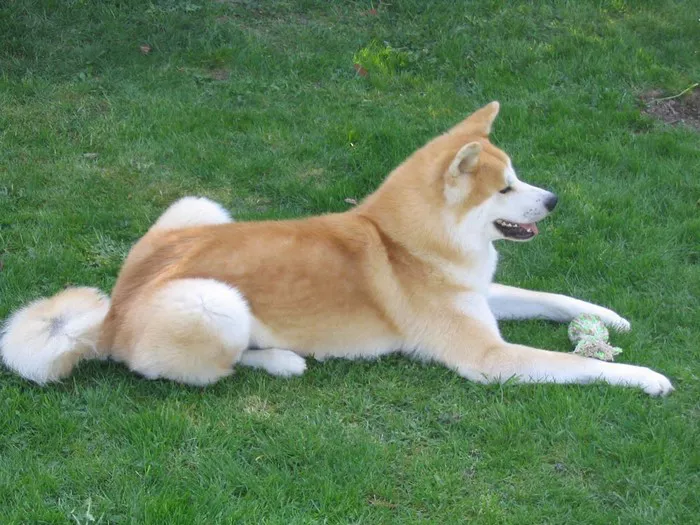The Akita, a breed with a name as powerful and majestic as its presence, holds a rich history and captivating characteristics. Originating in Japan, the Akita has traversed continents to become a beloved companion and symbol of loyalty. In this comprehensive guide, we delve into the breed’s Japanese and American history, explore its distinctive appearance, coat types, delve into its temperament, and discuss essential aspects of Akita health.
Breed Name
The Akita, known by its full name Akita Inu in Japan, embodies strength, dignity, and power. The word “Inu” translates to “dog” in Japanese, emphasizing the breed’s status as a distinct and revered canine companion. The name Akita reflects the breed’s stoic and robust nature, setting the stage for its role in Japanese history.
Japanese History
The Akita’s roots trace back to ancient Japan, where it was initially bred for a noble purpose. Originally known as the “Matagi Inu” or “hunting dog,” the Akita was revered for its strength and agility. Later, the breed became a symbol of loyalty and nobility. Akitas were often given as gifts to signify good health, happiness, and long life, and they were believed to bring good fortune to their owners.
American History
The Akita’s journey to the United States adds another layer to its rich history. In 1937, the Japanese government gifted two Akitas, siblings named Kamikaze-go and Kenzan-go, to the American Helen Keller. These two Akitas marked the beginning of the breed’s presence in the United States. The American military personnel stationed in Japan during World War II also played a significant role in introducing Akitas to the United States. The Akita breed gained formal recognition by the American Kennel Club (AKC) in 1955.
Appearance
The Akita’s appearance is commanding and powerful, reflecting its historical roles in Japan. With a large, bear-like head, small triangular eyes, and erect, curled tail, the Akita exudes an imposing yet dignified presence. The breed is well-balanced and substantial, conveying strength without sacrificing agility. Akitas typically have a broad, deep chest, straight back, and well-muscled limbs, contributing to their majestic stature.
Coat Types
Akitas boast a luxurious double coat that serves both aesthetic and practical purposes. The outer coat is straight and harsh, providing protection against harsh weather and external elements. The undercoat, soft and dense, offers insulation, keeping the Akita warm in colder temperatures. The breed comes in various colors, including red, brindle, white, and pinto. The distinctive facial mask and markings add to the breed’s striking appearance.
Temperament
The Akita’s temperament is a harmonious blend of loyalty, independence, and a reserved nature. Known for their unwavering devotion to their families, Akitas form strong bonds with their human companions. However, their independent streak adds an air of regality, making them dignified and sometimes aloof. Proper socialization and training from an early age are crucial to ensure a well-rounded and well-behaved Akita.
Health
Like all breeds, Akitas have specific health considerations that responsible owners should be aware of. Regular veterinary check-ups are essential to monitor their overall well-being. Common health concerns for Akitas include hip dysplasia, progressive retinal atrophy (PRA), autoimmune disorders, and hypothyroidism. Maintaining a balanced diet, regular exercise, and preventive healthcare measures contribute to the longevity and vitality of the Akita.
Conclusion
In conclusion, the Akita stands as a remarkable breed, embodying strength, loyalty, and regality. Its journey from the mountains of Japan to becoming a cherished companion worldwide is a testament to its enduring appeal. Understanding the Akita’s Japanese and American history provides a deeper appreciation for this majestic breed’s significance. Whether marveling at its distinctive appearance, appreciating its coat variations, navigating its unique temperament, or prioritizing its health, every aspect contributes to the holistic care of this noble canine companion. As stewards of the Akita legacy, responsible ownership involves embracing its history, respecting its individuality, and ensuring its well-being for generations to come.


